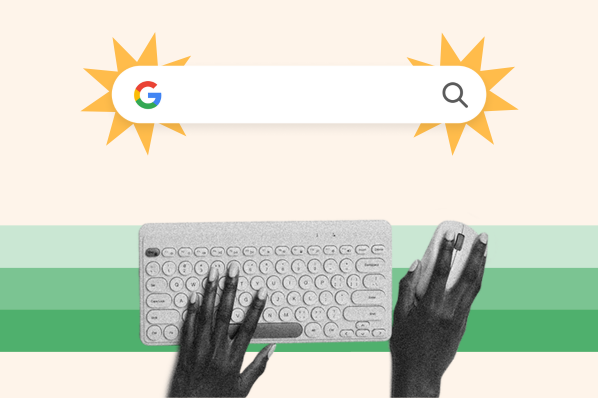In today’s digital age, having a strong online presence is crucial for businesses to succeed. Search engine optimization (SEO) improves a website’s visibility and drives organic traffic. While many factors contribute to SEO, one element that is often overlooked is image optimization. Images not only enhance a website’s visual appeal but also significantly improve user experience and website performance.
Statistics have shown that images significantly impact website performance and user experience. According to HTTP Archive, pictures comprise 21% of a website’s total weight. This means that if images are not optimized properly, they can significantly slow down a website’s loading speed. Research has shown that 40% of users will abandon a website if it takes more than three seconds to load. This highlights the importance of optimizing images to ensure faster loading times and better user experience.

Understanding the Basics of Image Optimization
Image optimization is reducing an image’s file size without compromising quality. Several elements can be optimized for photos, including file format, size, alt text, titles, and captions. Optimizing these elements improves a website’s performance and helps search engines understand the content of the images.
Optimizing images is important for both search engines and users. From a search engine perspective, properly optimized images can improve the crawlability and indexability of a website. Search engines rely on various signals to understand the content of a webpage, and pictures play a crucial role in providing additional context. By optimizing images with relevant alt text, titles, and captions, search engines can better understand what the image is about and how it relates to the overall content of the webpage.
From a user perspective, optimized images contribute to a better overall browsing experience. Users expect websites to load quickly and smoothly, and large image files can significantly slow a website’s loading speed. Website owners can ensure faster loading times by optimizing images and increasing user satisfaction and engagement.
How Image Optimization Affects Website Speed
Image optimization is crucial for SEO because it impacts website speed. Large image files can significantly slow down a website’s loading times, leading to a poor user experience and lower search engine rankings.
When a user visits a website, their browser needs to download all the elements on the page, including images. If the images are not optimized, they can take up a significant amount of bandwidth and increase the time it takes for the website to load. This can be especially problematic for users on mobile devices or with slower internet connections.
Research has shown that website speed directly impacts user experience and SEO. According to Google, 53% of mobile users will abandon a website if it takes more than three seconds to load. Additionally, Google has stated that website speed is one of the ranking factors they consider when determining search engine rankings.
By optimizing images and reducing their file size, website owners can significantly improve their websites’ loading speed. This leads to better user experience and improves search engine rankings, as faster websites are more likely to rank higher in search results.
Choosing the Right Image Format for SEO
Choosing the right image format is an important aspect of image optimization for SEO. Several different image formats are available, each with its pros and cons.
The most common image formats used on the web are JPEG, PNG, and GIF. JPEG is a compressed format best suited for photographs or images with complex color gradients. It offers a good balance between file size and image quality. PNG is another popular format that supports transparency and best suits images with sharp edges or text. GIF is primarily used for animated images or simple graphics.
When choosing the right image format for SEO, it’s important to consider the type of image and its purpose. For example, JPEG would be the most suitable format if the image is a photograph. PNG would be better if the image contains text or sharp edges. It’s also important to consider the image’s file size, as larger file sizes can slow down website loading times.
The Role of Alt Text in Image Optimization
Alt text, or alternative text, is a crucial element of image optimization for SEO. Alt text is a description added to an image’s HTML code and displayed when the image cannot be loaded or when a user hovers over the image. Alt text serves two main purposes: it helps search engines understand the content of the image, and it provides accessibility for visually impaired users.
From a search engine perspective, alt text provides additional context and helps search engines understand what the image is about. This is important because search engines cannot “see” photos like humans can, so they rely on alt text to understand the content of an image. By optimizing alt text with relevant keywords, website owners can improve their chances of ranking higher in search engine results.
From an accessibility perspective, alt text describes the image for visually impaired users who use screen readers to navigate websites. By providing descriptive alt text, website owners can ensure that visually impaired users can understand and engage with the content of their websites.
When writing alt text for images, it’s important to be descriptive and concise. The alt text should accurately describe what is happening in the image and include relevant keywords if appropriate. It’s also important to avoid keyword stuffing or using generic alt text such as “image” or “photo.”
Tips for Optimizing Image Titles and File Names
In addition to alt text, optimizing image titles and file names is another important aspect of image optimization for SEO. Image titles and file names provide additional context about the image and can impact search engine rankings.
When choosing image titles and file names, using descriptive and relevant keywords is important. This helps search engines understand what the image is about and how it relates to the overall content of the webpage. For example, if the image is a photograph of a red apple, a suitable file name could be “red-apple.jpg,” and the title could be “Close-up of a juicy red apple.”
It’s also important to avoid using generic or irrelevant file names and titles. Generic file names such as “IMG_1234.jpg” or “image.jpg” provide no context about the image and can negatively impact search engine rankings. Similarly, irrelevant titles or file names that do not accurately describe the image can confuse search engines and users.
By optimizing image titles and file names with relevant keywords, website owners can improve their chances of ranking higher in search engine results and provide additional context for both search engines and users.
The Benefits of Using Descriptive Captions
In addition to alt text, using descriptive captions for images can enhance the user experience and improve SEO. Captions provide additional context about the idea and can help users understand its relevance to the overall content of the webpage.
Captions are typically displayed below an image and are often used to describe or explain the picture briefly. They can be especially useful for images that require additional context or are part of a larger story or narrative.
From a user perspective, captions can enhance the overall browsing experience by providing additional information about the image. This can be particularly helpful for users skimming through a webpage or with limited time to read the entire content.
From an SEO perspective, captions provide another opportunity to include relevant keywords and improve search engine rankings. By optimizing captions with descriptive and relevant keywords, website owners can improve their chances of ranking higher in search engine results.
When writing captions for images, it’s important to be concise and descriptive. The caption should accurately describe what is happening in the image and provide additional context or information not mentioned in the surrounding text.
The Impact of Image Size on SEO
Image size plays a crucial role in both website speed and user experience. Large image files can significantly slow website loading, leading to a poor user experience and lower search engine rankings.
Finding a balance between file size and image quality is important for image size. While high-resolution images may look great, they can also be large in file size and take longer to load. On the other hand, low-resolution images may load quickly but may appear pixelated or blurry.
To optimize image size for SEO, it’s important to reduce the image’s file size without compromising its quality. This can be done through various techniques such as compression, resizing, and using the appropriate image format.
Compression is the process of reducing the file size of an image by removing unnecessary data. Several tools available can compress images without significantly impacting their quality. Resizing is another technique that involves reducing the dimensions of an idea to make it smaller in file size. By resizing an image to fit the dimensions of its container on a webpage, website owners can further reduce its file size.
Choosing the appropriate image format is also important for optimizing image size. As mentioned earlier, JPEG is a compressed format that balances file size and image quality well. PNG is another option that supports transparency but may result in larger file sizes. GIF is primarily used for animated images or simple graphics and may not be suitable for larger images.
By optimizing image size, website owners can significantly improve website speed and user experience, leading to higher search engine rankings and increased user engagement.
Tools and Techniques for Image Optimization
Several tools and techniques are available for optimizing images for SEO. These tools and techniques can help website owners reduce image file sizes, optimize alt text, titles, and captions, and improve website performance.
One popular tool for image optimization is Adobe Photoshop. Photoshop allows users to resize, compress, and optimize images for the web. It also provides features for adding alt text, titles, and captions to images.
Another popular tool is TinyPNG, which is an online image compression tool. TinyPNG uses smart lossy compression techniques to reduce the file size of PNG and JPEG images without compromising their quality. The tool also provides an API for developers to integrate image compression into their workflows.
Plugins for content management systems such as WordPress are available for those who prefer a more automated approach. These plugins automatically optimize images as they are uploaded to the website, reducing the need for manual optimization.
In addition to these tools, various techniques can be used for image optimization. These include using lazy loading, which delays the loading of images until needed, and responsive images, which serve different versions of an idea based on the user’s device and screen size.
These tools and techniques allow website owners to optimize their images for better SEO and user experience.
The Importance of Consistent Image Optimization for Improved SEO
In conclusion, image optimization is a crucial aspect of SEO that should not be overlooked. Optimizing images can significantly improve website speed, user experience, and search engine rankings.
By reducing image file sizes, choosing the right image format, optimizing alt text, titles, and captions, and using descriptive captions, website owners can ensure that their images contribute to a better overall browsing experience and provide additional context for search engines.
Consistent image optimization is key to achieving long-term success in SEO. By regularly optimizing images and staying updated with the latest tools and techniques, website owners can ensure that their websites perform at their best and provide a positive user experience.
So, if you haven’t already, it’s time to optimize your images for better SEO. Take the time to understand the basics of image optimization, choose the right image format, write effective alt text, titles, and captions, and reduce image sizes without compromising quality. By doing so, you’ll be on your way to improving your search engine rankings and providing your users with a better overall browsing experience.











